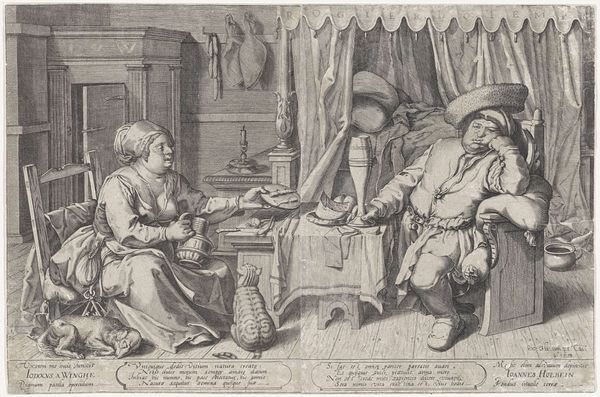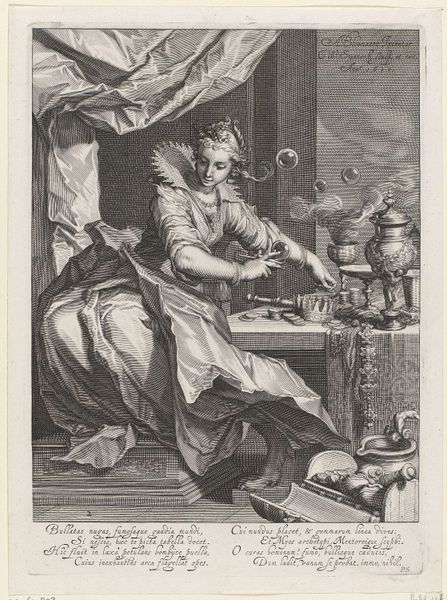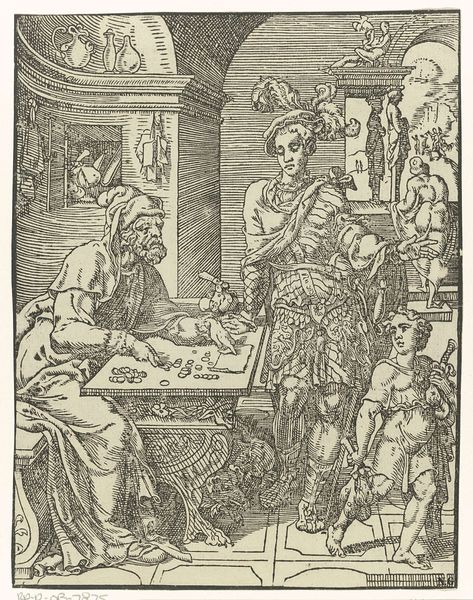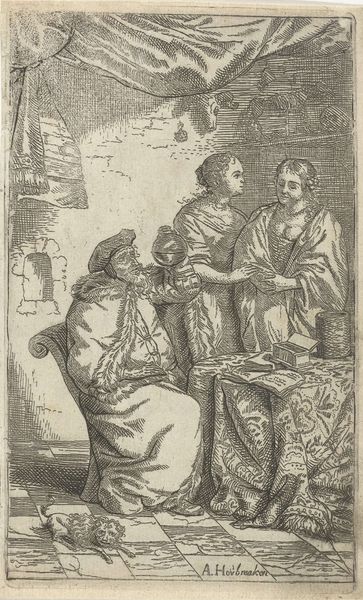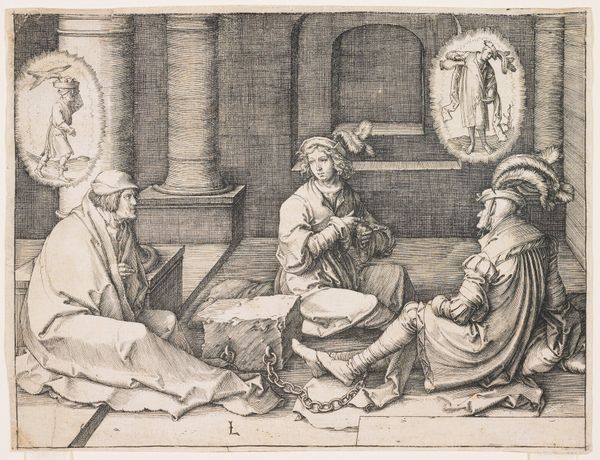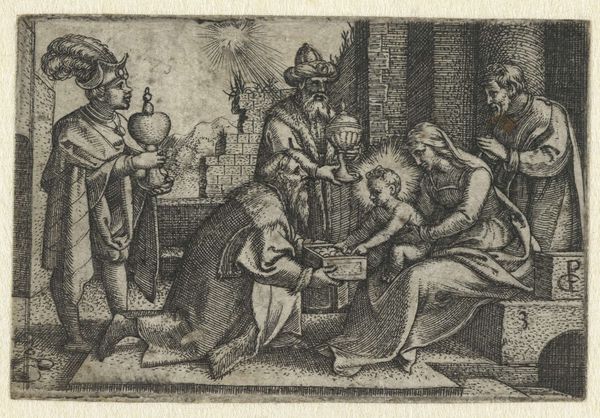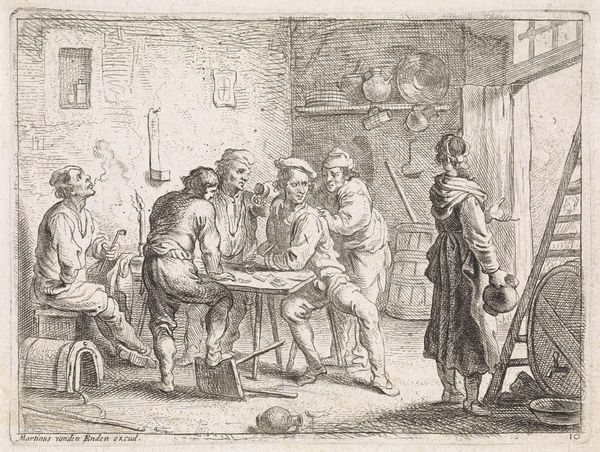
#
pencil drawn
#
amateur sketch
#
light pencil work
#
pencil sketch
#
incomplete sketchy
#
charcoal drawing
#
pencil drawing
#
pen-ink sketch
#
pencil work
#
initial sketch
Dimensions: height 125 mm, width 170 mm
Copyright: Rijks Museum: Open Domain
Editor: So this is "Interior with a smoking farmer, a woman and a boy" by Justus van den Nijpoort, created sometime between 1635 and 1692. The piece seems to be created through an etching technique, displaying the rough living conditions of a family in what seems to be a single-room house. What stands out to you in terms of the materiality of this work? Curator: Given its likely status as a print, I’m particularly drawn to understanding this piece through the lens of its production and distribution. We must ask: how did the artist's material choices shape the reach of the image? How many impressions were created, and to what social strata did they circulate? The etched lines are basic, not super refined – hinting it might have been appealing to a broad audience instead of aiming solely for wealthy patrons. Editor: That’s an interesting way to look at it. I initially was focused on the figures, thinking about their emotional state, or possible narratives, within that rudimentary home. Curator: While considering figures and narratives is essential, a materialist perspective pushes us to look beyond. Consider, for instance, how the printing press revolutionized access to imagery and information for burgeoning merchants in the 17th century. What are the social conditions enabling van den Nijpoort to produce, and, who exactly consumed these types of images? Were they teaching tools to convey societal norms? Editor: So, instead of just analyzing the scene, you're emphasizing the social and economic impact of making multiples. Were the themes related to specific classes and economic production systems? Curator: Precisely! Art doesn't exist in a vacuum. Understanding how it was produced, circulated, and consumed tells us a lot about the values of that society. Consider the labor involved. The artist, the printer, and their place in a society developing the notion of art as property. Editor: I hadn't considered how that impacted the reading of the artwork. Thinking about its production really opens it up! Curator: Indeed! This image becomes a case study of art's material life. The materiality leads directly to asking about class, labour, and consumption, enriching how we grasp this domestic scene.
Comments
No comments
Be the first to comment and join the conversation on the ultimate creative platform.
